24-Hour Cool Bulk Fermentation Experiment Using a “Cold Proofer”
Some busy bakers can only make sourdough on weeknights after work. Is it possible to stretch out your bulk fermentation time to a 24-interval to support a weeknight sourdough process such as:
– Wednesday night – mix the dough (24 hour bulk fermentation)
– Thursday night – shape the dough (24 hour cold retard / final proof)
– Friday night – bake the dough
For this experiment I used three different “cold proofers” to maintain a dough temperature below room temperature and above refrigerator temperature.
The Experiment
For the experiment, I arbitrarily chose three bulk fermentation temperatures of 54F, 59F and 64F
I mixed three batches of dough at an initial dough temperature of 70F/21C. As soon as the dough was mixed, I moved each of the three batches to a separate cold proofer, set at 54F/12C, 59F/15C and 64F/18C. I let the dough ferment for 24 hours (untouched, no stretch and folds, etc).
After 24 hours, I preshaped the (cold) dough, rested for 30 mintues, final shaped, rested another 30 minutes, rthen final proofed in the refrigerator for 16-21 hours.
The Results
The 64F/18C dough slightly overproofed, but still produced a nice, consistent crumb. The loaf was a little flat and lost some structure.
The 59F/15C dough and the 54F/12C dough both made beautiful loaves. The sweet spot is probably somewhere between those two temperatures (at 24 hours, and with a long, cold retard).
Schedule Flexibility
This method provides tremendous schedule flexibility for people trying to make sourdough during the week with busy schedules.
For example, you can mix the dough on Monday night, shape the dough on Tuesday night and bake the dough on Wednesday night. It works well with short time availability around 24-hour intervals (e.g., weeknights).
Once the dough gets down to fridge temp, there is a lot of flexibility on timing. There is not a big difference between 18 and 24 hours in the fridge, for example, especially for the final proofed dough at 39F/4C.
You could also adjust the starter percentage (I used 20%), to slow down the process more and/or working at slightly warmer temperatures. Going from 20% to 10% starter will extend the bulk fermentation time by about one-third.
Flavor/Texture
The long, cool bulk fermentation produces a softer, more tender crumb with a more complex flavor profile. It does not necessarily create a more sour flavor (as one would expect with a long, cold final proof), but it brings out more interesting fermented notes.
The Details
The recipe I used was:
240g Central Milling High Mountain High Gluten Flour
120g Central Milling Artisan Bakers Craft Plus
40g Central Milling Whole Wheat
300g Water (at 60F/16C) (75%)
80g Starter (20%)
8g Salt (2%)
Mix all ingredients. Slap and fold 100 times. Rest 3 minutes. Slap and fold 40 times. Rest 3 minutes. Slap and Fold 30 times. Mixed dough temp was 70F/21C. Move dough to cold proofers. Total prep time, including cleanup is 25 minutes.
Loaf #1 64F/18C for 24 hours – rose 180%
Loaf #2 59F/15C for 24 hours – rose 150%
Loaf #3 54F/12C for 24 hours – rose 30%
Note: when the dough temperature gets colder (below 55F/12C), it does not “show the rise” as much in the fridge. The % rise is not reliable at cold temperatures. The dough is still fermenting but not showing the rise.
At shaping, the 64F/18C dough felt a little overproofed. The 54F/12C dough felt stiff. The 59F/15C dough felt the best.
After shaping, I let the dough rest at room temp for 30 minutes before going to the fridge. The final dough temp coming out of the fridge was 39F/4C for all three loaves.
Loaf #1 (64F/18C) continued rising in the fridge. I baked that after 16 hours in the fridge.
Loaf #2 (59F/15C) slightly rose in the fridge. I baked that after 17 hours in the fridge.
Loaf #3 (54F/12C) slowly rose in the fridge. I baked that after 21 hours in the fridge. It could have easily gone for 24 hours but my schedule did not permit that timing.
The “Cold Proofers”
I’m testing a number of warm + cold proofers. The three I used for this experiment are:
IVYX Scientific 5-Liter Incubator – This is a small, versatile unit that warms and cools. It holds about 3L of dough, which is enough capacity for a 1000g flour weight batch to double in volume.
VEVOR 25L Incubator – This is too large to keep on your countertop but is a large, versatile warmer/cooler. It warms up and cools down faster than the other options I’ve tested. This devices has an unshrouded circulation fan in the inside top which appears to be a potential safety hazard to me (an exposed spinning fan). I’m not recommending this product at this time, but there is a similar unit, without that fan from IVYX Scientific.
Bonsenkitchen Mini-Fridge – This is an inexpensive mini-fridge that I have added an external thermostat controller to.
If you don’t have a cold proofer, you can sometimes find a cool spot in your house in the winter (e.g., basement, garage, etc.). But the cold proofers allow you to ferment at cool temperatures year-round.
These laboratory incubators have recently dropped in price to make them a reasonable alternative to the dedicated warm sourdough proofers, at about the same price.
Bulk fermenting at a controlled, cool temperature, year-round, is the future of sourdough baking for busy people, in my opinion. By controlling the temperature, you can make sourdough work around your schedule.


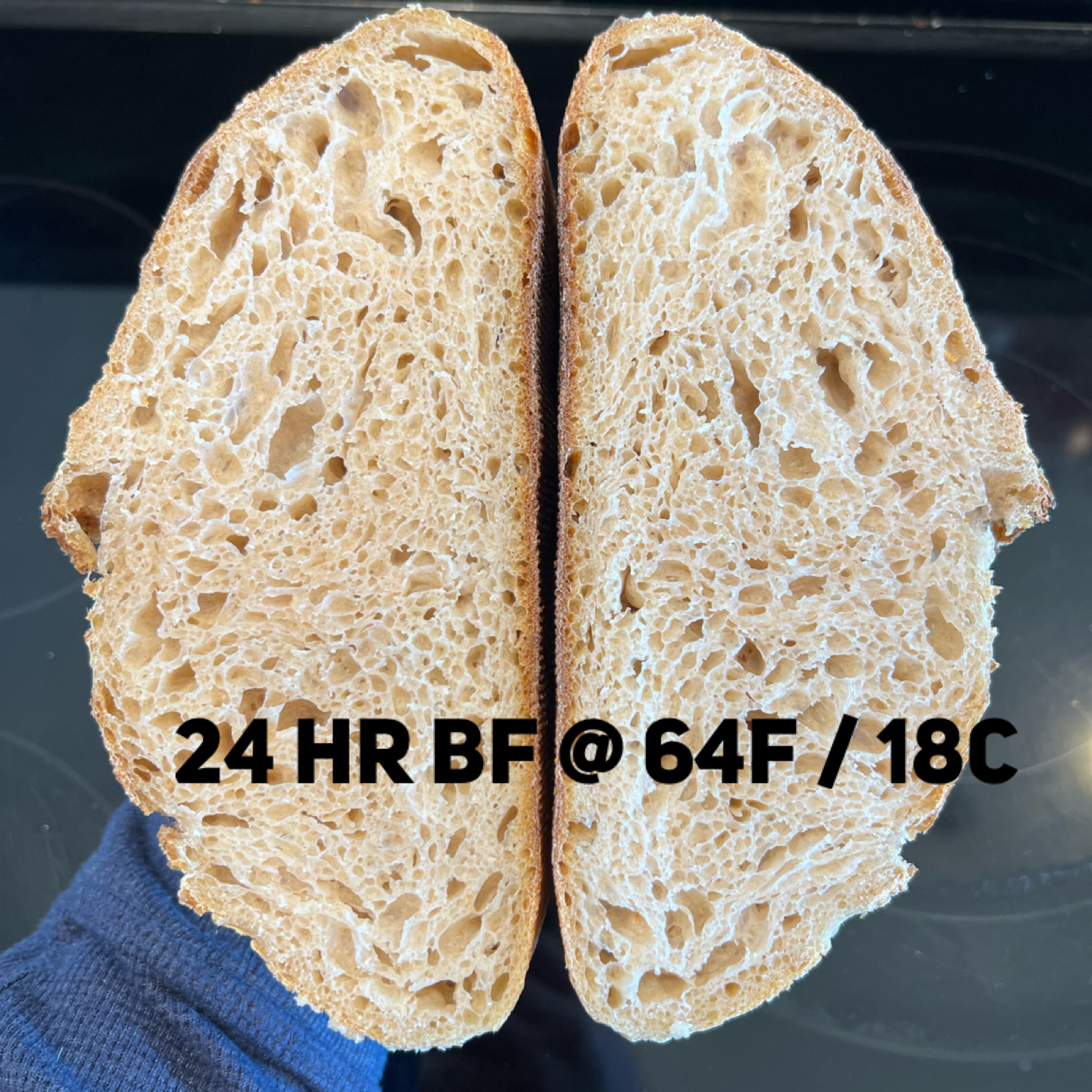
Tom Cucuzza
Share:
Related Posts
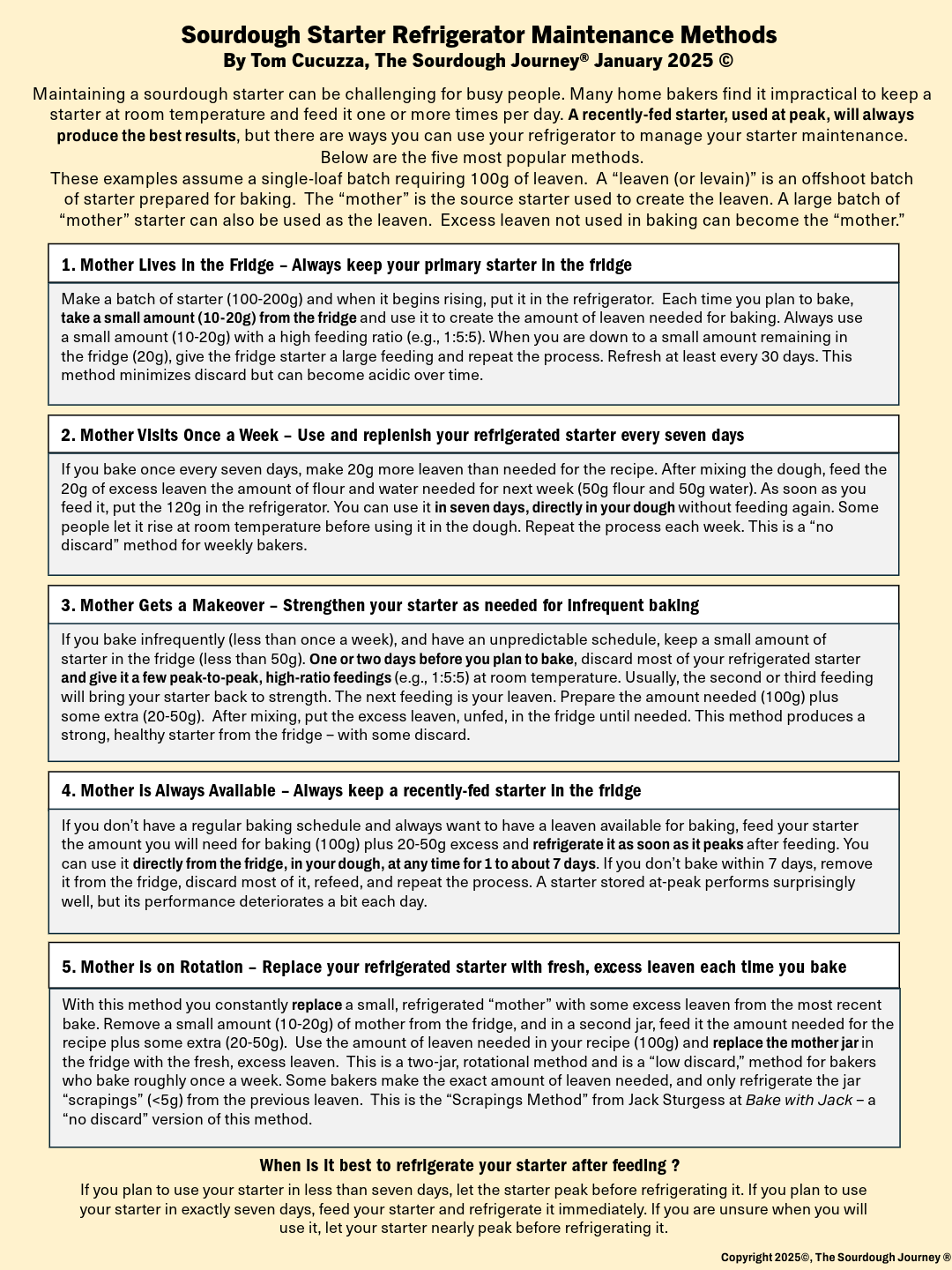
Sourdough Starter: Refrigeration Maintenance Methods
How can I maintain my sourdough starter in the refrigerator instead of at room temperature?
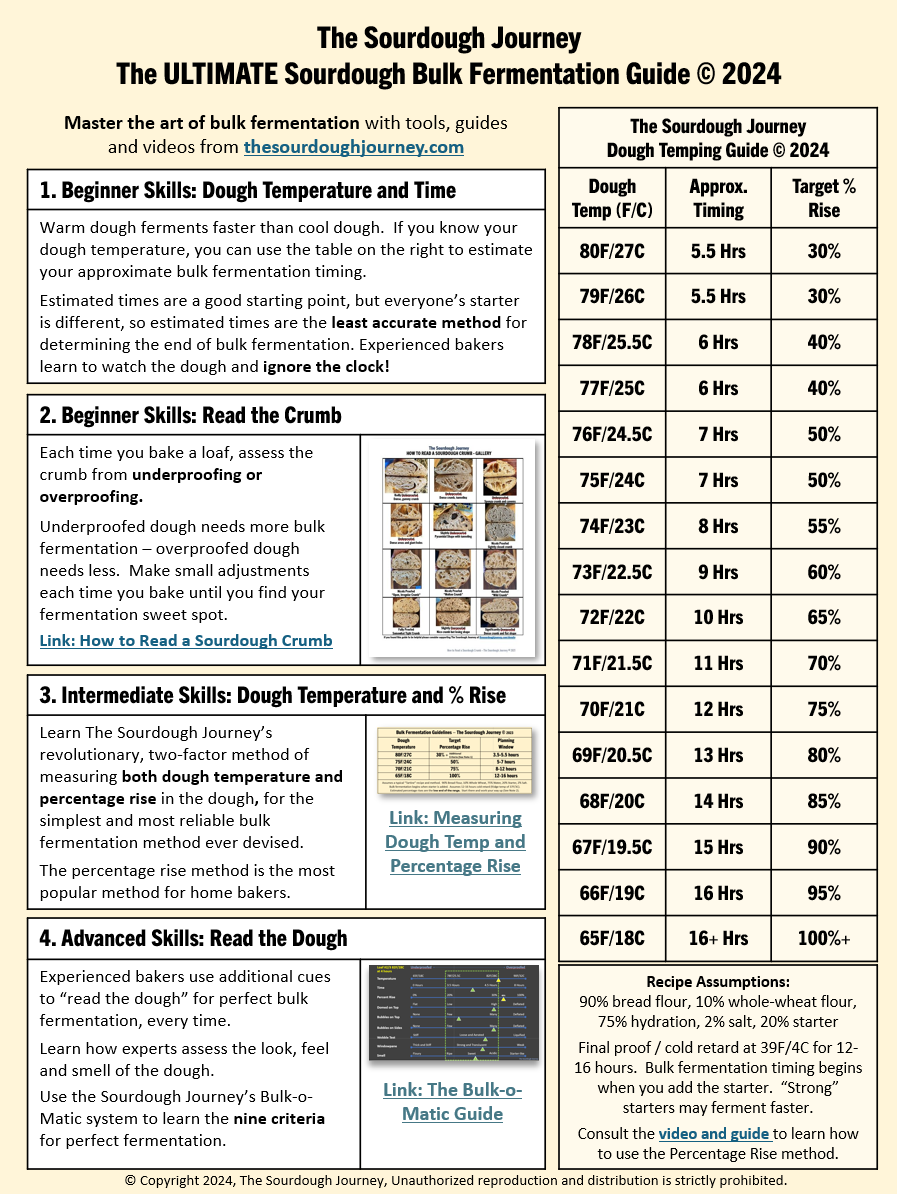
The ULTIMATE Sourdough Bulk Fermentation Guide
When is sourdough bulk fermentation finished?

Dough Temping for PERFECT Sourdough Fermentation
What is sourdough “dough temping,” and how does it work?
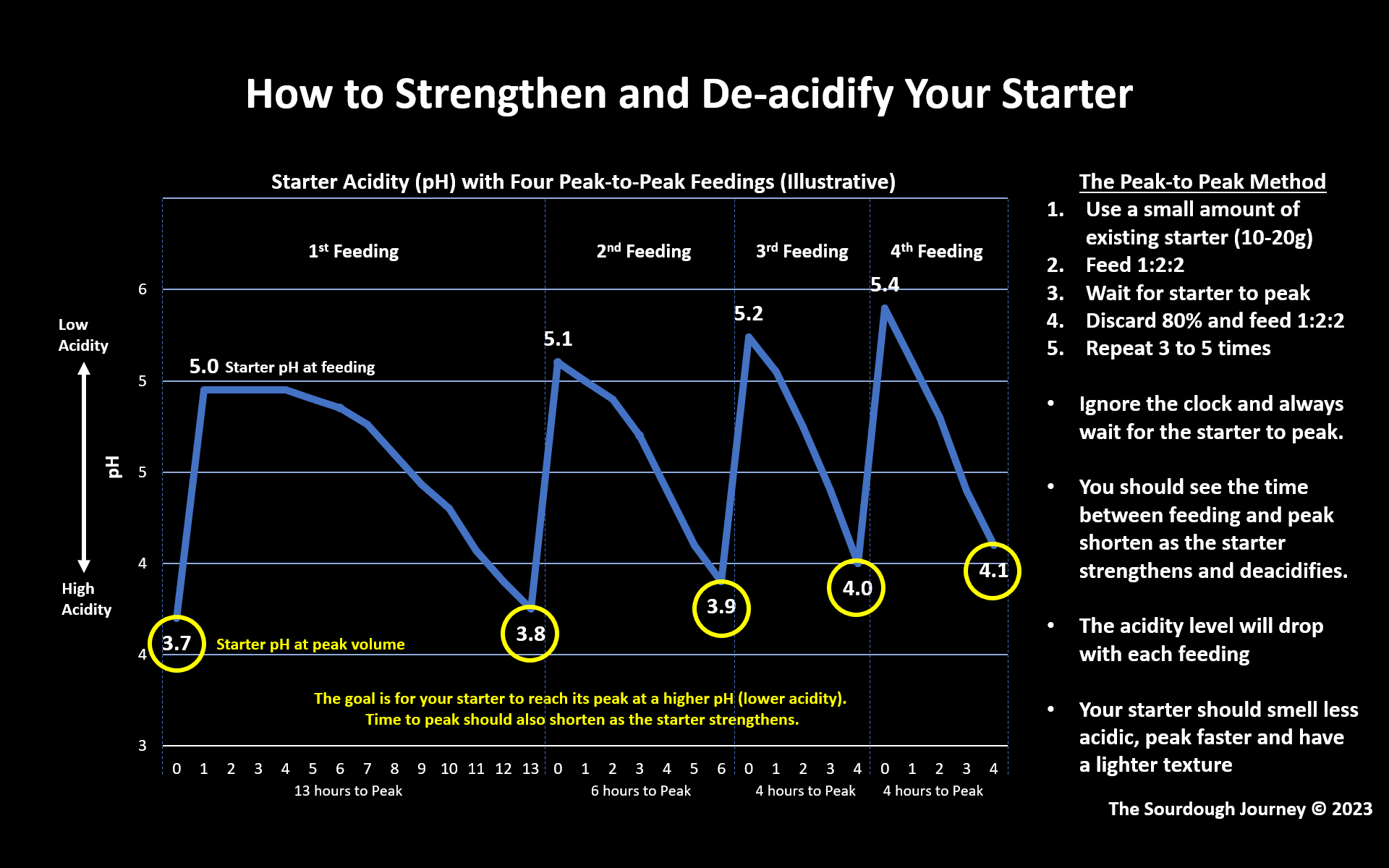
The Science of the Peak-to-Peak Method of Strengthening a Sourdough Starter
What is the Peak-to-Peak Method and how does it strengthen a weak sourdough starter?
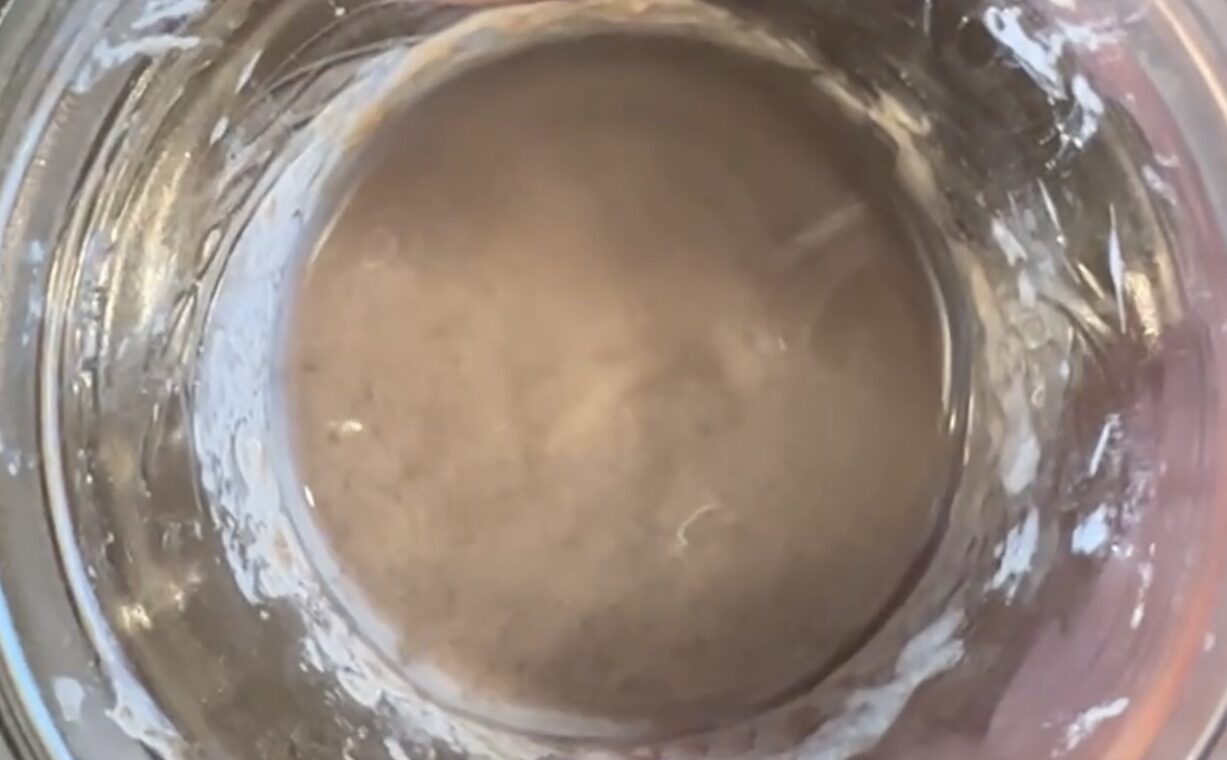
How to Strengthen a Weak, Acidic Starter
Is your sourdough starter sluggish? How do you identify and fix a weak, acidic starter. This document is the companion guide to the popular video “How to Strengthen a Weak, Acidic Starter.”
